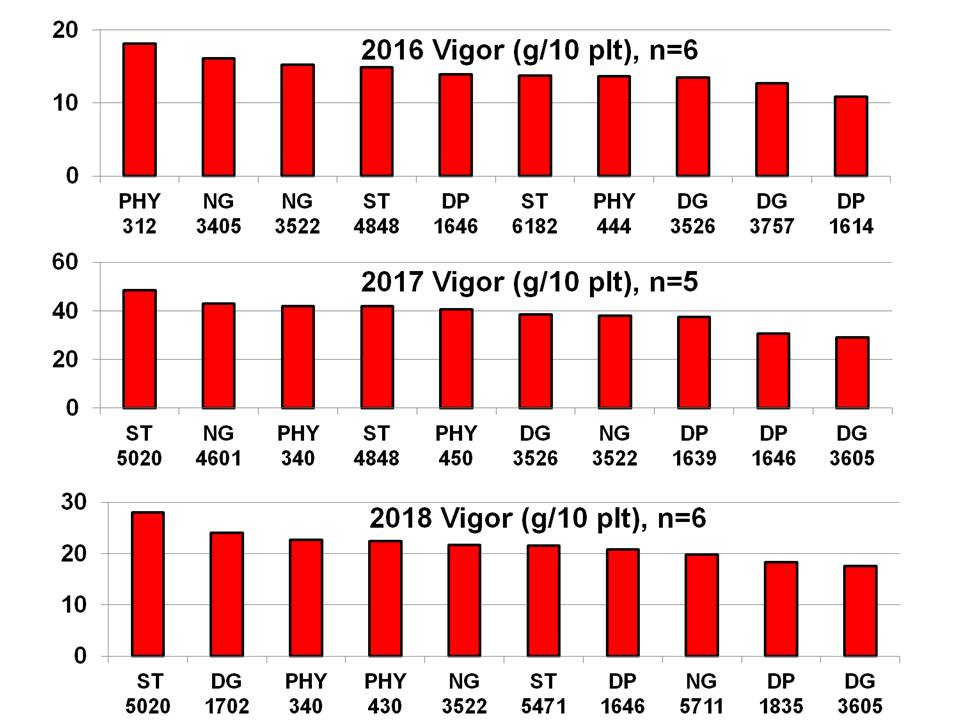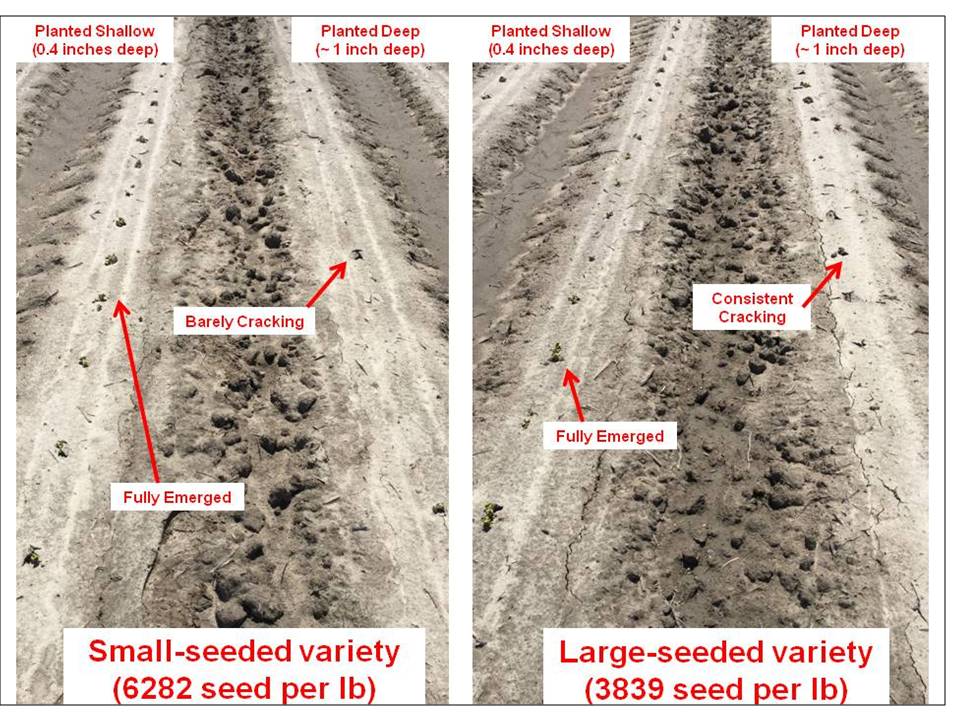Seed Is Expensive…Protect This Investment!! (Collins & Edmisten)
go.ncsu.edu/readext?592953
en Español / em Português
El inglés es el idioma de control de esta página. En la medida en que haya algún conflicto entre la traducción al inglés y la traducción, el inglés prevalece.
Al hacer clic en el enlace de traducción se activa un servicio de traducción gratuito para convertir la página al español. Al igual que con cualquier traducción por Internet, la conversión no es sensible al contexto y puede que no traduzca el texto en su significado original. NC State Extension no garantiza la exactitud del texto traducido. Por favor, tenga en cuenta que algunas aplicaciones y/o servicios pueden no funcionar como se espera cuando se traducen.
Português
Inglês é o idioma de controle desta página. Na medida que haja algum conflito entre o texto original em Inglês e a tradução, o Inglês prevalece.
Ao clicar no link de tradução, um serviço gratuito de tradução será ativado para converter a página para o Português. Como em qualquer tradução pela internet, a conversão não é sensivel ao contexto e pode não ocorrer a tradução para o significado orginal. O serviço de Extensão da Carolina do Norte (NC State Extension) não garante a exatidão do texto traduzido. Por favor, observe que algumas funções ou serviços podem não funcionar como esperado após a tradução.
English
English is the controlling language of this page. To the extent there is any conflict between the English text and the translation, English controls.
Clicking on the translation link activates a free translation service to convert the page to Spanish. As with any Internet translation, the conversion is not context-sensitive and may not translate the text to its original meaning. NC State Extension does not guarantee the accuracy of the translated text. Please note that some applications and/or services may not function as expected when translated.
Collapse ▲In NC, we are no stranger to challenging planting weather. The last several years are a testament to this very fact. The recently launched NC State University Cotton Planting Conditions Calculator is a new online tool that growers can use to guide them through planting decisions, as a real-time, localized and precise platform for which to make planting decisions or adjust planting practices. This new calculator is discussed in another article.
In some years, when challenging or adverse planting weather occurs in shortlived intermittent spells, many growers can simply halt planting during those periods to avoid scenarios where there is a high likelihood of poor stand establishment, and resume planting when favorable conditions return. However, we know that suboptimal planting conditions can be prolonged in some cases, and the size and range of many modern producers do not allow for much downtime if we are to finish planting before crop insurance deadlines. A recent survey concluded that replanting costs approximately $35 per acre, therefore representing a significant expense in a cotton crop. So why not do everything in our power to avoid replanting? Naturally, we can’t change the physiology of cotton seed, therefore we still need to avoid planting in poor conditions, especially when intense rains coincide with cool temperatures. However, if we are forced to plant when conditions are marginal or adequate, we MUST adjust our planting practices in order to hopefully achieve an optimal stand, or at least minimize the need to replant. When adequate or marginal planting conditions occur, it’s best to hold off planting until more favorable conditions return. If that is not an option, growers should at least avoid planting into saturated soils, especially fields that are prone to crusting. Below are a few suggestions to improve the odds of successful planting during suboptimal times.
DOCUMENT EVERYTHING ABOUT YOUR SEED. This applies to every grower, every field, every variety, every year. We state this every year in some form or fashion but I’ll go ahead and say it…..this will most likely be ignored by many. I’ll also say this too…..if we experience less-than-ideal planting weather, it may be very easy this year to identify who reads this article, or at least beyond this point. With regard to seed, document everything, well before planting begins. Growers should document every lot number of seed for every variety they purchase, along with the seed treatment (list all products included in seed treatment) and whether seed was treated upstream or downstream, warm and cool germination percentages (contact your dealer or seed company rep for cool germ values), and seed size (seed per lb). Seed size is either explicitly printed on the bag or can be calculated by dividing the number of seed in a bag by the bag weight. The lot number and seed treatment code are printed on each bag and are a record that can be traced in case you have questions later or encounter problems with emergence. You must take extra effort to secure cool germ values. Read between the lines right here…..there may be some issues with cool germ for some varieties in 2019!! ….not every variety or brand, but some may have problems. It’s important to note that seed size and warm/cool germ can vary from lot number to lot number, even for the same variety. Research in NC has illustrated that seed size (seed/lb), along with warm and cool germ values, is a good predictor of likely emergence and seedling vigor relative to other varieties when planting into adequate or marginal conditions. If optimal planting conditions occur, we may never know the difference and we’ll probably achieve good stands regardless of cool germ, but if suboptimal planting conditions occur, there may be some major issues with stand establishment and replanting if smaller seed with low cool germ is planted during these periods. Lastly, we strongly encourage all growers to save a small sample (approximately 1 lb) of seed from each lot number they purchased, in case problems occur during planting, so that seed can be re-evaluated if need be. Save each sample in a cool, dry place at least until an acceptable stand is achieved.
Manage to plant according to seedling vigor. Vigor is the product of warm and cool germ percentages, but is also closely related to seed size. During periods of challenging planting conditions, larger seeded varieties (4000 seed per lb or less) with higher cool germ values increase the chances of successful stand establishment than smaller seeded varieties (5000 seed per lb or greater) with lower cool germ values. In very poor conditions, all seed sizes will likely experience challenges and result in poor emergence. In great conditions, like we observed in 2015, all seed sizes can achieve optimal stands and ideal early season growth. But inadequate or marginal conditions (less than ideal, but not terribly poor), seed size and warm/cool germ values can mean the difference in achieving an optimal stand or not, thus the need to replant or not. Let’s be clear…..unless you have fields that present significant challenges with stand establishment in every year or most years (severe crusting, seedling disease), you probably would want to make your variety decisions based on performance (yield potential and stability, fiber quality, trait packages, etc.). In other words, match the variety to the field based on variety performance for that environment, but if a small-seed variety is the best performer in a particular field, plant other fields first where a larger seeded variety may be best suited from a yield potential standpoint. Vigor and seed size are important to consider during planting and your management practices and planter depth may need to be adjusted depending on your soils and prevailing conditions. The chart below illustrates the vigor ranking of all varieties in the 2016-2018 NC On-Farm Cotton Variety Evaluation Program. The results from each year are not meant to be compared across years, due to vastly different conditions between those years. However, the comparison of varieties within each of the two years may give you some idea as to which varieties may be more vigorous than others (smaller seeded varieties may need to be planted shallower and in better conditions than larger seeded varieties, depending on environmental conditions). Again, it is important for you to document seed size as printed on the bag for YOUR lot number, and compare that to other varieties you purchase, as well as warm and cool germ values, all of which can vary across lot numbers.
Plant shallower during adequate or marginal conditions. Cotton should generally be planted 0.5 to 0.7 inches deep is most situations. In periods of cool weather, we can maybe plant shallower than this (0.25 to 0.5 inches deep). Good soil/seed contact is still essential regardless of the weather, so plant as shallow as you can while still covering seed with soil. Planting deeper than 0.7 inches will prolong the time needed for seedlings to emerge which only serves as an added stress on seedlings. Additionally, planting deep in marginal conditions could cause seed’s energy to expire before fully emerging, resulting in poor stands. Accurately measuring planting depth (distance between the top of the seed and the top of soil directly above it) and making adjustments can have a significant impact on successful stand establishment.
The photos below illustrate that both vigor and planting depth are important in achieving optimal stands, especially when less-than-ideal conditions occur. This illustrates that smaller-seeded varieties may be more sensitive to deep planting, however planting shallow (approximately 0.4 inches deep) resulted in acceptable stands for both large and small-seeded varieties. Even so, planting shallower may also be necessary for larger seeded varieties, depending on weather conditions.
Increase seeding rates 10 to 20 percent when planting in “adequate” or “marginal” conditions, depending on your current seeding rate. Our very general recommendations are that seeding rates should be around 43,000 to 44,000 when planting into fairly ideal conditions. As a very general suggestion, if your current/normal seeding rate is rather low, consider increasing rates to 45,000 to 47,000 seed per acre during adequate or marginal conditions.




